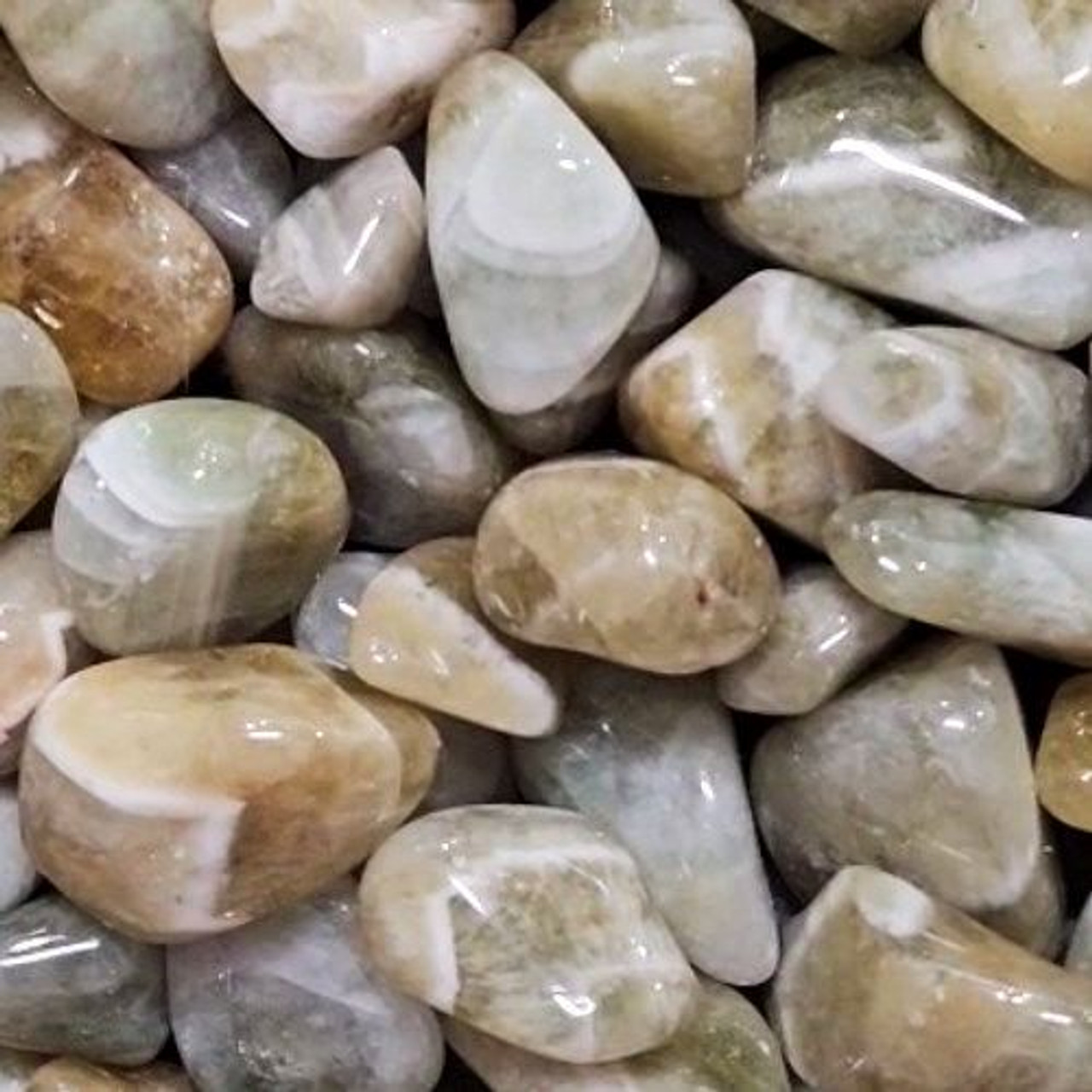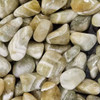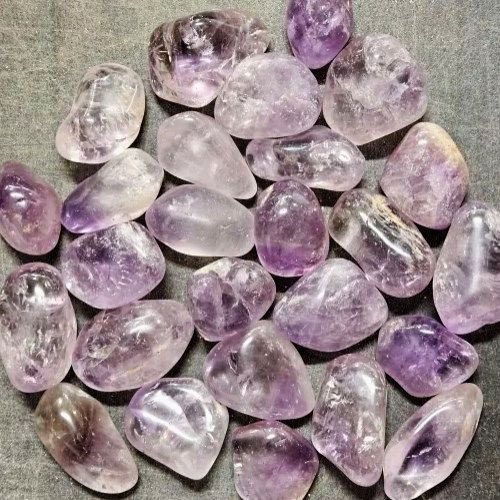Product Description
Prasiolite aka Green Amethyst Tumbled Stone 1"-2" LG
Mineral Information:
Prasiolite, also known as green quartz or vermarine, is a green-colored variety of quartz. Unlike praisolite, which is created through heat treatment of amethyst, prasiolite forms naturally in its green color. The green hue of prasiolite is typically a result of the presence of iron compounds within the quartz crystal lattice.
Here are some key features and characteristics of prasiolite:
-
Color: Prasiolite exhibits a range of green shades, from light green to deep green. The color intensity can vary depending on the iron content and the specific geological conditions during its formation. Prasiolite's green color can be vibrant and reminiscent of spring foliage.
-
Clarity: Prasiolite is generally transparent, allowing light to pass through the gemstone. However, like other quartz varieties, it may contain natural inclusions or imperfections that can add uniqueness and character to the stone.
-
Quartz Composition: Prasiolite is a variety of quartz and shares the same chemical composition as other quartz crystals. It is composed of silicon dioxide (SiO2) and forms in the trigonal crystal system.
-
Jewelry and Decorative Use: Prasiolite is a popular gemstone choice for jewelry due to its attractive green color. It is often faceted, cut into cabochons, or used in beads for necklaces and bracelets. Prasiolite jewelry can be worn for its aesthetic appeal or to benefit from its metaphysical properties.
It's important to note that the terms "prasiolite" and "green amethyst" are sometimes used interchangeably, although "green amethyst" is technically incorrect since amethyst is the purple variety of quartz. The use of the term "prasiolite" helps to differentiate the green variety from amethyst.
Metaphysical Meaning:
Prasiolite is considered a stone of abundance, lova, and compassion, and emotional healing. Prasiolite is thought to support spiritual growth, enhance intuition, and promote a sense of balance and harmony.
Mineral Care:
Prasiolite, being a variety of quartz, has a moderate level of durability and is relatively resistant to everyday wear and tear. However, it is important to consider the fragility factors associated with prasiolite:
-
Hardness: Prasiolite has a hardness of 7 on the Mohs scale, which means it is relatively hard and less susceptible to scratching. However, it can still be scratched by materials with a higher hardness, such as diamond or corundum. It is advisable to store prasiolite separately from harder gemstones to prevent potential scratches.
-
Cleavage: Quartz, including prasiolite, exhibits a distinct cleavage plane, which is a tendency to break along specific directions. While prasiolite is considered to have good toughness overall, it is still important to avoid subjecting it to excessive force or pressure that could cause cleavage and result in breakage.
-
Heat and Temperature Changes: Extreme temperature changes can pose a risk to prasiolite. Quartz, including prasiolite, can be susceptible to thermal shock when exposed to rapid temperature fluctuations. It is advisable to avoid sudden temperature changes, such as exposure to extreme heat or placing prasiolite jewelry under cold water, as it could potentially cause fractures or breakage.
-
Chemicals and Cleaning: Prasiolite can be sensitive to certain chemicals and cleaning agents. Harsh chemicals, acids, and even some common household cleaners can damage the surface of prasiolite. It is recommended to clean prasiolite with mild soap and warm water, avoiding the use of abrasive cleaners or harsh chemicals.
To care for and protect prasiolite:
- Store prasiolite jewelry separately from other gemstones to prevent potential scratches.
- Avoid exposing prasiolite to sudden temperature changes or extreme heat.
- Protect prasiolite from contact with chemicals, acids, and harsh cleaning agents.
- Clean prasiolite gently using mild soap and warm water, and dry it thoroughly with a soft cloth.
By handling prasiolite with care and following these guidelines, you can help maintain its beauty and minimize the risk of damage or breakage.
Disclaimer:
No information here is intended to diagnose, treat or cure ailments or afflictions of any kind. One should always consult a medical professional if a serious issue presents itself.









